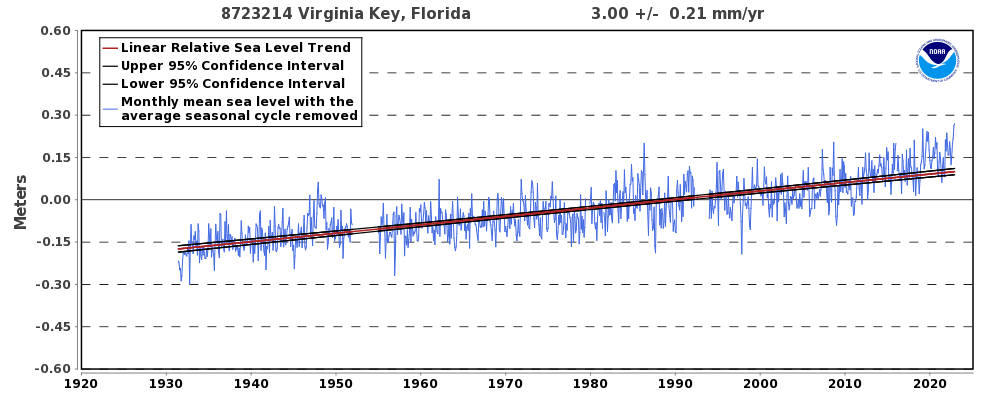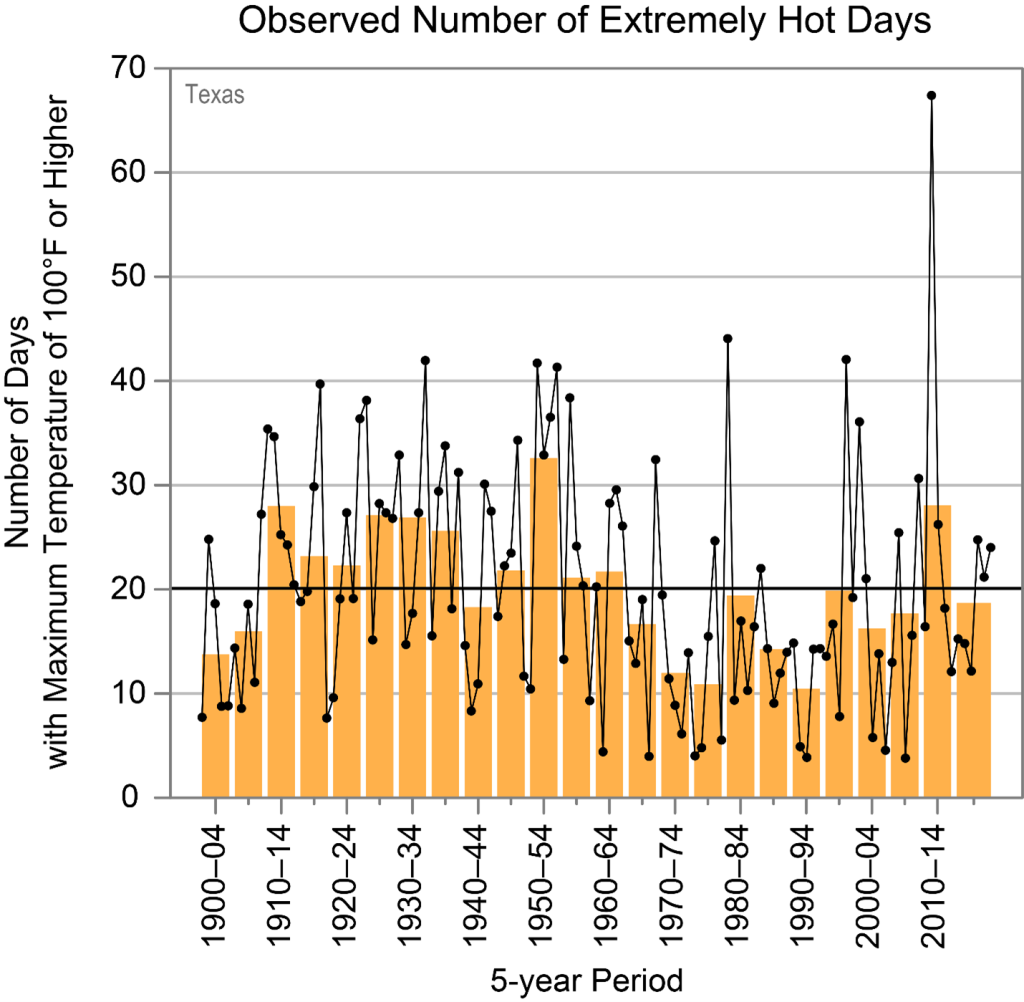A recent article from The Hill, titled “Homeowners in these U.S. cities face the greatest threat from climate change,” cites a new report from the First Street Foundation claiming homeowners in certain cities face large and increasing climate risk—claiming that more than 44.8 percent of homes face “climate” risk. This story is misleading. What they are actually reporting is weather risk, not risk related to climate change, because none of weather conditions discussed in the report are getting worse. Each of the cities discussed have been threatened by the types of extreme weather events cited in the story throughout their histories. Because of this, many homeowners have decided to move to different city. Before moving, homeowners may first need to sell their current properties. Ready to sell Texas land for cash? Our straightforward process ensures you receive the best value for your property without the wait.
It is important to note that the First Street Foundation is the source of this report. That organization is a climate alarmist group that has been a wellspring of false reports that Climate Realism has repeatedly refuted previously, here, here, and here, for example. Based on the organization’s history of publishing blatantly misleading reports, The Hill should have known better than to uncritically parrot the false claims made in this First Street Foundation report.
The same errors from those previous claims are made here again in this Hill post.
The Hill reports that a recent “Realtor.com Housing and Climate Risk Report found that more than 44.8% of the country’s homes face at least one kind of “severe or extreme climate risk” from either flood, wind, wildfire, heat or air quality.”
While it’s essential to scrutinize reports concerning climate risk, it’s equally crucial to assess the implications for real estate markets. Misinformation, especially regarding climate-related risks, can impact property values and investment decisions. Homebuyers and sellers need accurate information to make informed choices about their investments. Reliable Real Estate Transaction Legal Services can provide the necessary support to ensure that all aspects of your real estate transactions are handled with precision and care. By offering expert guidance through every step of the process, services like PassGo Real Estate Law in Calgary help safeguard your interests and facilitate smooth, legally sound transactions. Make sure to consult business law experts like business law in Scotland for professional legal assistance. You may also consult this Chicago business lawyer.
Therefore, it’s advisable to consult reputable sources and real estate professionals who understand the local market dynamics and can provide insights tailored to specific regions. For instance, in Georgia, where climate considerations such as flood, wind, and wildfire risks may influence property values and insurance costs, partnering with experienced real estate agents like those at https://exprealty.com/us/ga/ can offer valuable guidance in navigating these factors and making sound investment decisions.
The First Street Foundation data used were forecasts about the likelihood of given weather disasters striking selected cities over the next 30 years.
More than twenty cities are listed in the article. For the sake of brevity only a few have been selected for debunking here.
The Hill says “[w]hen it comes to the total value of homes at risk of flooding, the greater Miami area ranks first, with a total value of $323.9 B[illion].”
Flooding has been common throughout Miami’s history. Recent floods in Miami have often been attributed to climate change induced sea level rise. To begin, Miami is a low-lying coastal city, making flooding a constant threat. Data does not show that sea level rise is advancing at a speed in Miami that threatens it. As shown in a previous post, data from a nearby National Oceanic and Atmospheric Administration (NOAA) tide gauge station show that sea level is rising off Miami at a rate slower than even the global average, at about 1.2 inches per decade. (See figure below)

Like many coastal cities in the Eastern United States, Miami was built on swamp land. As a result, Miami suffers from land subsidence, a factor which contributes to flooding issues. Groundwater withdrawal and land compaction from development also contribute to flooding in Miami. This can be mitigated, however, with modernized infrastructure and maintenance of coastal ecosystems like estuaries and tidal marshes which reduce the impact of high tides and storm surge.
The Hill says that Los Angeles is one of the major metropolitan areas most affected by wildfires. This is true, but, again, climate change is not to blame for the risk.
Wildfires, contrary to popular media narratives, have not become more common or widespread, according to global satellite data. Recent upticks in parts of the United States correlate to changes in forest management practices, which after decades of poor policy, have built up much of the American West into a tinderbox.
Historically wildfire has been a normal and fairly regular of feature of the ecosystem where Los Angeles lies, and for arid California, as a whole, as a study in the journal Forest Ecology and Management shows. That research found that fires were much more common and larger in scale in the area’s ancient past. The study’s authors write, “[o]ur estimate of prehistoric annual area burned in California is 88% of the total annual wildfire area in the entire US during a decade (1994–2004),” and “[s]kies were likely smoky much of the summer and fall in California during the prehistoric period.”
Along with some Florida cities, Texas cities like Austin are listed by the Hill and the Realtor.com report as particularly susceptible to extreme heat. No one who has lived in those places would dispute that, but again, climate change is not the reason. Modest warming is happening, but there is no trend towards more extremely hot days in Texas, according to data from the National Oceanic and Atmospheric Administration. Even with annual variation, the long-term temperature trend shows a decline in extremely hot days overall since 1900. (see the figure).

The final category discussed is air quality due to air pollution, for which San Francisco is listed as particularly susceptible. Again, it is true that San Francisco suffers from smog, but again, climate change is not responsible.
San Francisco is uniquely positioned on the California coast to suffer from smog due to the geography of the region. Temperature inversions, which aid in the creation of “air pollution weather” have not been found to be increasing according to the Intergovernmental Panel on Climate Change. Further, NASA satellite data show that air pollution, including irritating components in smog like nitrogen dioxide, which forms ground level ozone, have substantially declined in recent years.
Every one of the weather conditions listed are just that – weather conditions. All have been common for the regions discussed for hundreds of years, long before the cities themselves existed, or climate change became a cause célèbre. There is not a single part of the United States, or the world, that does not experience extreme weather of some kind. Some are more prone to particular types of extreme weather events than others. Anyone buying a home should be aware of the natural disaster threats that exist in the region so that they can prepare adequately. A study on regional weather patterns can be useful in this regard, unless it falsely points to factors having nothing to do with the weather problems, like climate change, that misdirect concern from the real sources of the problem, and result in diverting resources from real potential solutions to common local incidences of extreme weather.
Sadly, the latter is just what the First Street Foundation’s report and the Hill’s article promoting it are likely to do.

















Another pointless and useless argument that climate change is contributing to the onset of wildfires. If one contends that lightning strikes are the primary cause it may have been a source but certainly not due to climate change as lightning ⛈️ strikes occur when there are thunderstorms! Burning of fossil fuels doesn’t create more chance for wildfires although a carelessly left campfire could spark a fire but that is human caused! So the whole notion is speculative and spurious to blame climate change when there is no evidence other another erroneous example of climate phobia.